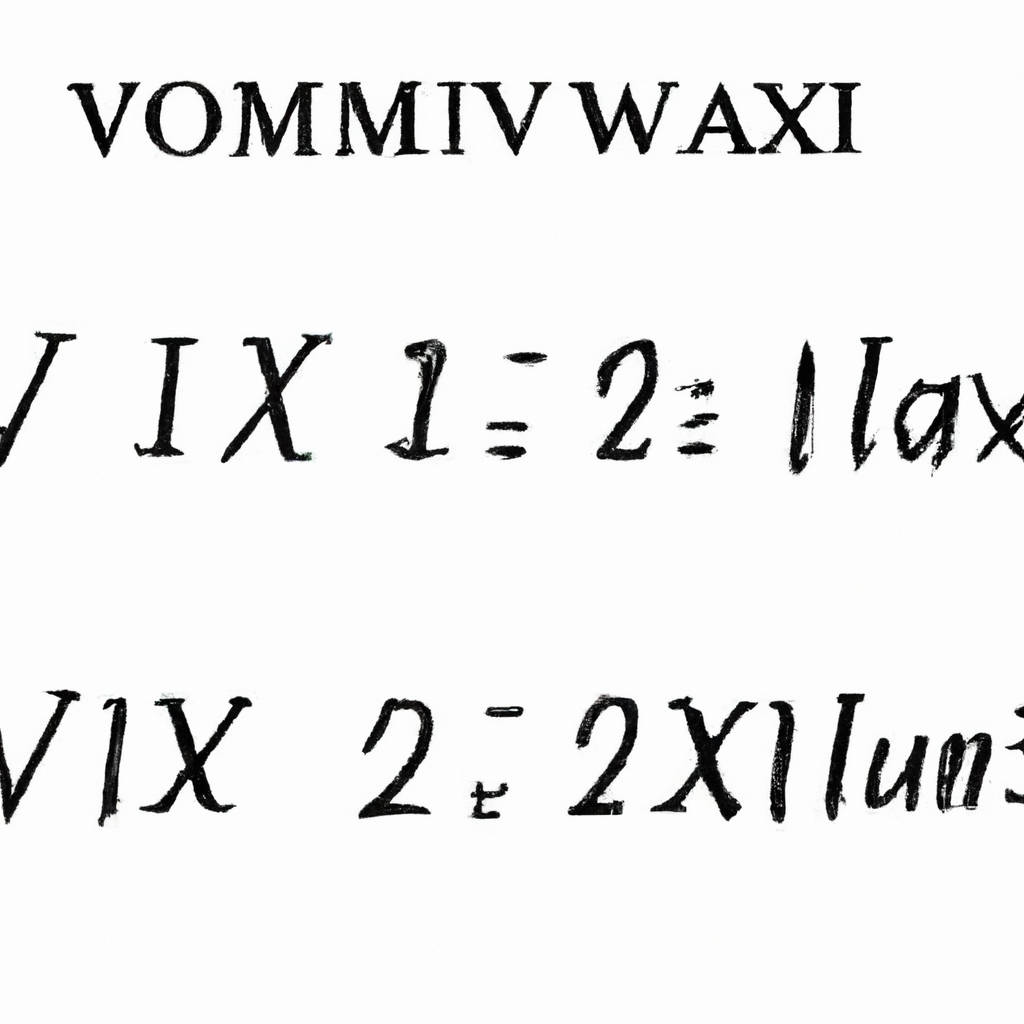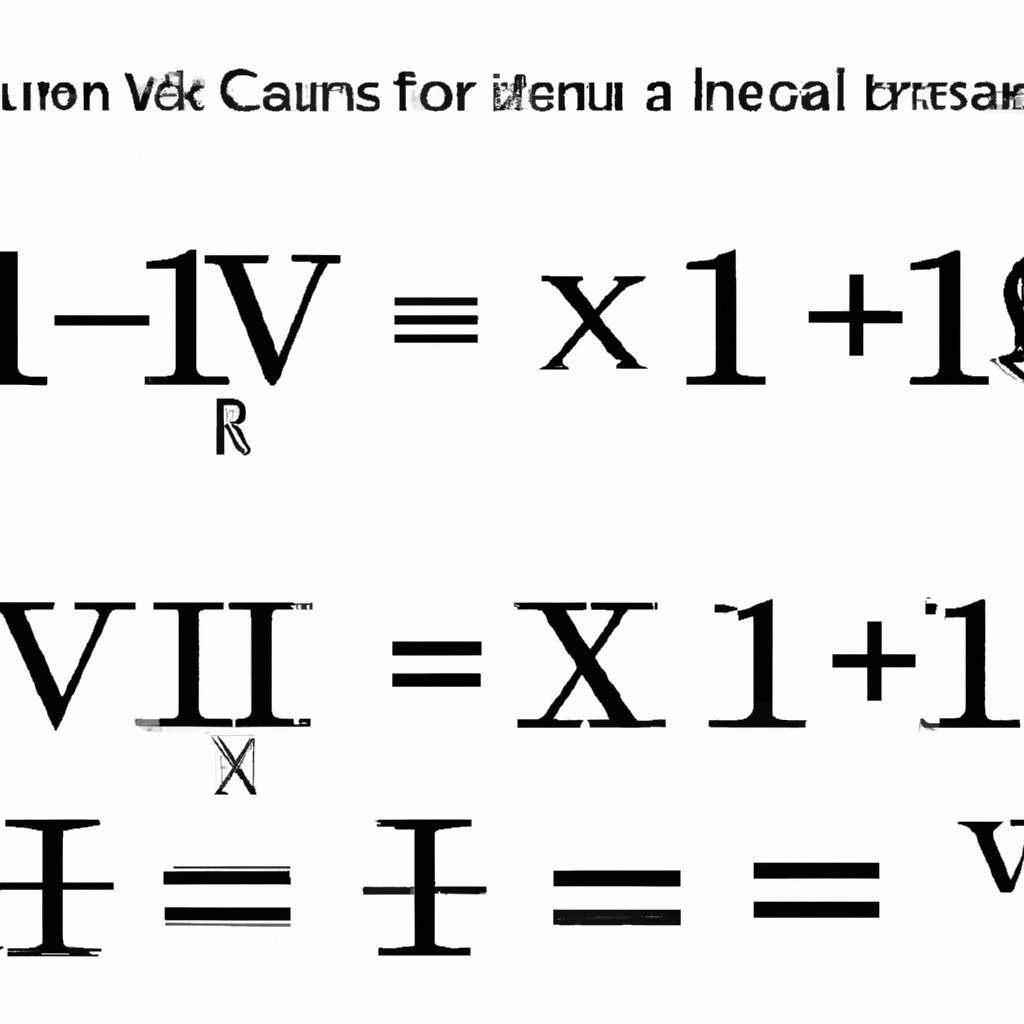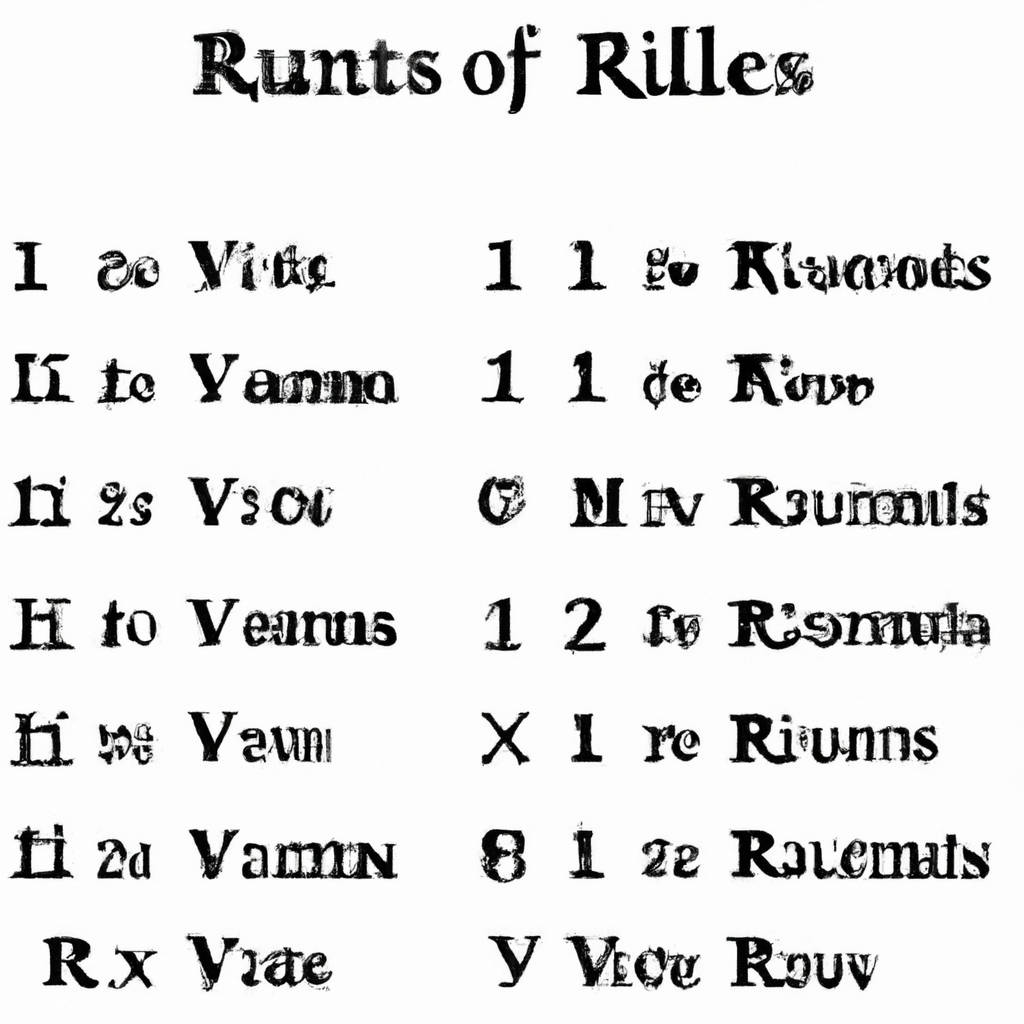Learn About XXV and XXVIII Roman Numerals in Details
Roman numerals are a fascinating system of numerical notation that originated in ancient Rome and continued to be used well into the Middle Ages. The XXV and XXVIII numerals are part of this system and carry their own significance. XXV represents the number 25, while XXVIII represents the number 28. Learning about these numerals in detail can provide insight into the historical context and mathematical principles behind their usage.
To understand XXV and XXVIII, it is essential to grasp the basic principles of the Roman numeral system. In this system, different letters represent different values. For instance, X represents 10, V represents 5, and I represents 1. By combining these letters, various numbers can be formed. In the case of XXV, the two X’s signify 20, while the V represents 5, adding up to 25. Similarly, XXVIII is composed of two X’s representing 20 and two V’s representing 5, resulting in a total value of 28.
These numerals have been used extensively throughout history in various contexts. They were commonly employed in ancient Rome for numbering years, as well as in monumental inscriptions and official documents. The Roman numeral system was especially prevalent in the Roman Empire, where it was utilized for numerous purposes, such as indicating the dates of public events and marking the construction year of buildings.
Moreover, understanding XXV and XXVIII can also shed light on the mathematical concepts underlying these numerals. The Romans did not possess a concept of zero, so their numerical system relied heavily on the additive principle. They would add up the values of each letter to determine the total number. This approach differs from the modern decimal system, where place value plays a crucial role.
In conclusion, learning about XXV and XXVIII in detail provides a deeper understanding of both the historical and mathematical aspects of Roman numerals. These numerals, alongside the entire Roman numeral system, offer valuable insights into the ancient Roman civilization and its unique approach to mathematics. Exploring this numerical notation system can be an enriching experience, showcasing the ingenuity of ancient cultures and their contributions to the field of mathematics.

XXV Roman Numerals
XXV is the Roman numeral representation for the number 25. Roman numerals are a numerical system that originated in ancient Rome and were used throughout the Roman Empire. The Roman numeral system is based on a combination of letters from the Latin alphabet. Each letter corresponds to a specific value, and when combined, they create different numbers. XXV is composed of three letters: X, which represents 10, and V, which represents 5. The letter X is repeated twice, indicating that it should be added to itself, resulting in a value of 20. The letter V is then added to the sum of X, which gives the final value of 25. Roman numerals were widely used in various aspects of Roman society, such as recording years and numbering chapters in books. They are still occasionally used today, particularly in formal contexts or to give a sense of classicism and timelessness.
How to Write XXV Roman Numerals?
To write XXV in Roman numerals, one must understand the basic principles of this ancient numeral system. Roman numerals were widely used in the Roman Empire and are still used today in various contexts, such as indicating the order of monarchs or chapters in books. The symbol “X” represents ten, “V” represents five, and “I” represents one. To write XXV, we combine the symbols for ten (X) and five (V) with the subtractive principle. The larger numeral (X) is placed before the smaller numeral (V), indicating that we subtract five from ten. This subtractive principle allows us to write XXV in Roman numerals, representing the number twenty-five.

XXVIII Roman Numerals
XXVIII is a Roman numeral that represents the number twenty-eight. In the ancient Roman numeral system, numbers were represented using a combination of letters from the Latin alphabet. This system was widely used throughout the Roman Empire and continued to be used for many centuries thereafter. XXVIII, like all Roman numerals, has a distinctive and visually appealing appearance, with its combination of X’s and V’s. It is fascinating to see how the Romans devised this system to represent numbers, which is quite different from the decimal system we use today. The Roman numeral system has a certain charm and elegance that continues to captivate people’s interest to this day.
How to Convert XXVIII Roman Numerals into its Numerical Value?
Converting XXVIII Roman numerals into its numerical value is a straightforward process that can be easily grasped with a little bit of practice. Roman numerals were widely used in ancient Rome and are still occasionally employed today for various purposes, such as numbering chapters or indicating the year on clocks. XXVIII, specifically, represents the number 28. Understanding how to convert this Roman numeral into its numerical value requires knowledge of the symbols and their corresponding values. The Roman numeral system is based on a combination of seven basic characters: I, V, X, L, C, D, and M. Each of these symbols holds a specific value, and by combining them, one can represent any number. To convert XXVIII into its numerical value, we need to break it down and evaluate each symbol sequentially. The first symbol, X, represents the value 10. The second symbol, X, also represents 10. When two identical symbols are placed next to each other, their values are added together. Therefore, combining these two X’s gives us 20. The third symbol, V, represents 5. In Roman numerals, when a smaller value symbol appears before a larger one, we subtract the smaller value from the larger. Since V comes before X, we subtract 5 from 10, resulting in 5. Finally, the fourth symbol, I, represents 1. When a smaller value symbol appears after a larger one, we add the smaller value to the larger. So, adding I after V gives us 6. Adding up the values of each symbol in XXVIII, we get 20 + 5 + 1 + 1 + 1 = 28. Therefore, XXVIII in Roman numerals represents the numerical value 28. By understanding the basic principles of the Roman numeral system and practicing the conversion process, one can easily decipher the value of any Roman numeral, including XXVIII.

Basic Rules to Write Roman Numerals
Roman numerals are a system of numerical representation that originated in ancient Rome and has since been used in various contexts. Understanding the basic rules to write Roman numerals is essential for anyone wanting to decipher or use this ancient numerical system. The first rule is that the numerals are composed of seven basic symbols: I, V, X, L, C, D, and M, which represent the values 1, 5, 10, 50, 100, 500, and 1000, respectively. The second rule is that these symbols are combined to form different numbers. For instance, when a smaller numeral appears before a larger numeral, it is subtracted from the larger one. Conversely, when a smaller numeral appears after a larger numeral, it is added to the value of the larger numeral. Another important rule is that a numeral cannot be repeated more than three times in a row. To represent larger numbers, a horizontal line is placed above a numeral, indicating multiplication by 1000. Lastly, the numerals are always written from left to right, with the larger values on the left and the smaller ones on the right. By adhering to these basic rules, one can effectively write and interpret Roman numerals.
Rules to Convert Roman Numerals to Numbers
Converting Roman numerals to numbers may seem like a daunting task at first, but with a few simple rules, you can easily decipher their numerical value. The first rule to keep in mind is that each Roman numeral corresponds to a specific value. For instance, ‘I’ represents the number one, ‘V’ represents five, and ‘X’ stands for ten. Secondly, when Roman numerals are written from left to right, their values are added together. However, if a smaller numeral appears before a larger one, its value is subtracted instead. For example, ‘IV’ equals four, as ‘I’ is subtracted from ‘V’, while ‘VI’ equals six, as ‘I’ is added to ‘V’. Additionally, if the same numeral appears consecutively, its value is multiplied. For instance, ‘III’ equals three, as ‘I’ is multiplied by three. Lastly, it is important to note that Roman numerals do not have a zero or negative value, as they were developed before the concept of zero was introduced. By adhering to these simple rules, you can effortlessly convert Roman numerals to numbers and unravel the mysteries of this ancient numeral system.




